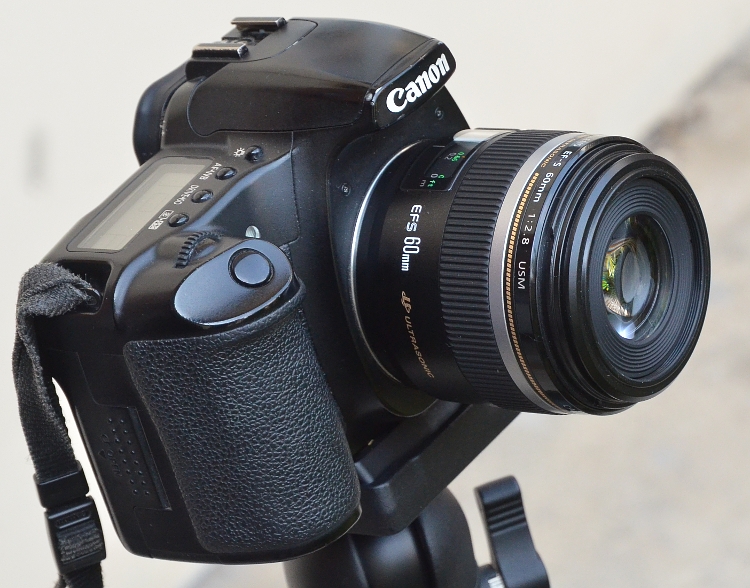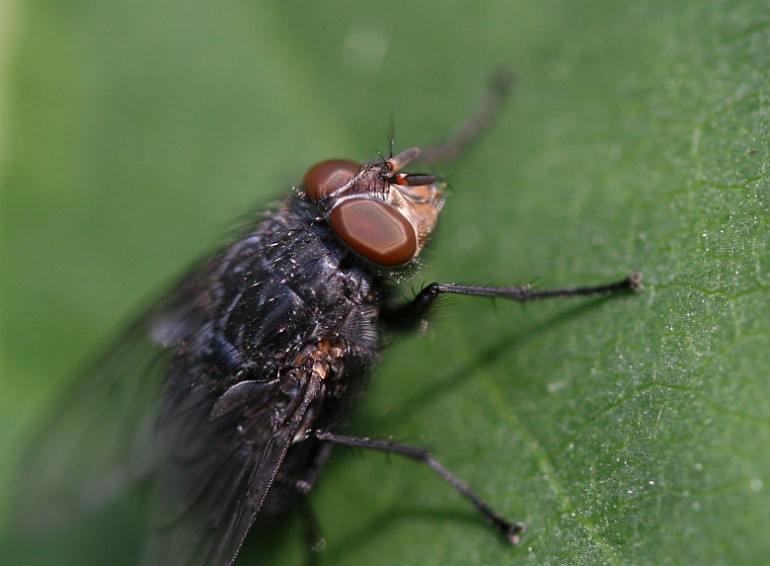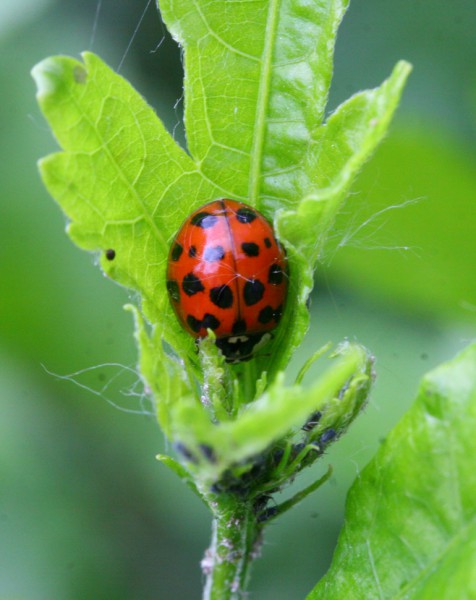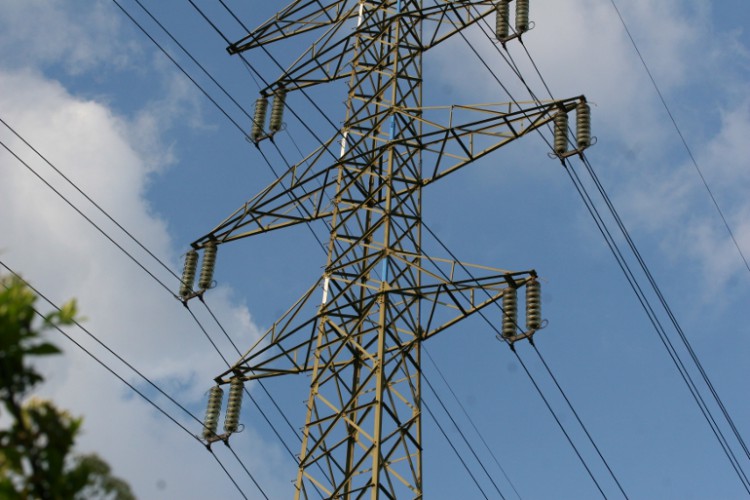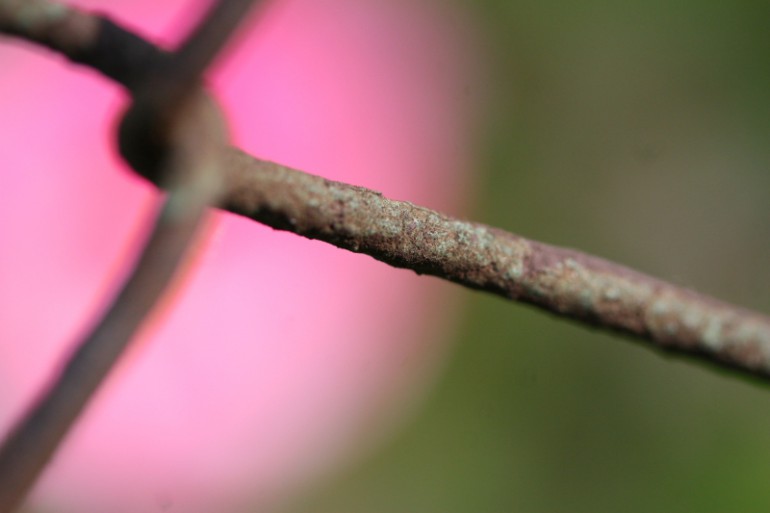Canon 60mm Macro review
 |
 |
Canon 60mm Macro lens review
Canon 60mm Macro lens review
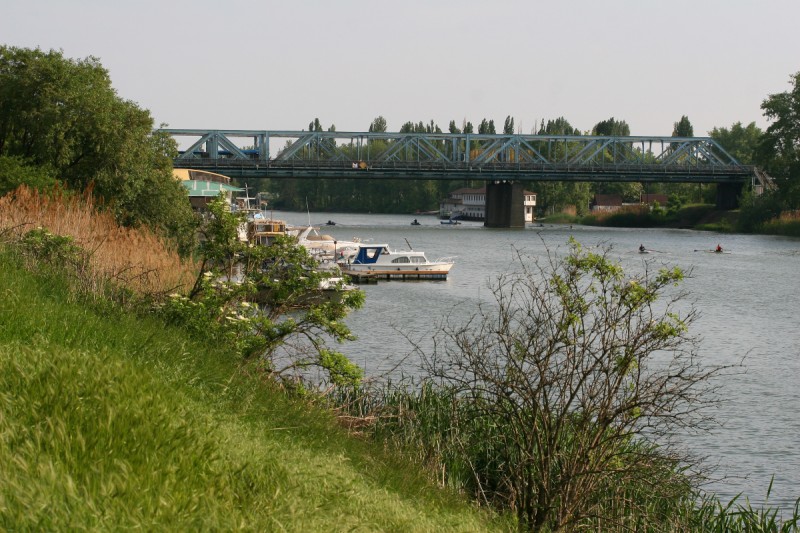 The bigger sized picture is much sharper on the computer Canon 60mm at f/8 1/800s ISO250 Canon 30d camera, what is evident the 60mm focal length and the shallower dof makes the lens not so capable for landscapes
The bigger sized picture is much sharper on the computer Canon 60mm at f/8 1/800s ISO250 Canon 30d camera, what is evident the 60mm focal length and the shallower dof makes the lens not so capable for landscapes

Canon 60mm lens review
Introduction
This lens was on my imaginary to do list a long ago. After using this lens a little I really liked it. All pictures below was made handheld with a little effort. The original pictures are tack sharp no sharpening needed. The small files on the web are not really shows the real value of the lens. Consider all picture was made with a 8Mp Canon 30d camera. I guess with newer cameras with better resolution and colours this lens can produce even better images. But even on a 8Mp camera this lens produces images, that doesn’t lack anything.
The pictures this lens produces are extraordinary. I am not really a macro shooter, never used a tripod for macro ( at the time of this review). Sometimes I make pictures of flowers, or insects, but my main interest is bird and wildlife photography and landscapes. With this lens you can make pictures like this without any big effort, just turn the lens on the camera and shoot. For get the best magnification out of the lens, sometimes the hood must removed not to turn shadows on the lens, because the minimal focusing distance is almost at the end of the lens.
______________________________________________
Official name
Canon Ef-s 60mm f/2.8 Macro USM
Canon 60mm specificationMinimal focus distance: 0.2m (90mm working distance) |
Compatibility
The Canon 60mm is an Ef-s lens is only compatible with crop sensor cameras like Digital rebels and Canon 10D, 20D..70D, 7d, 7d II camera bodies. Doesn’t even fit to Full frame cameras unless someone cut the back plastic part of the lens.
Category
If you want to categorize it the Canon 60mm is a very fine lens at any measure. You can make many pictures with this lens, which is very hard to make otherwise with other lenses.
Canon 60mm range
I am a strange birder guy and somehow always want to make landscapes with any lens I test, no matter which focal length. I don’t know the reason, but with this lens first I also want to use to make landscapes. The Canon 60mm is not really meant to landscapes, but from a distance it is possible to make some compressed ones. The 60mm is a short telephoto. This focal length is very good for portraits, can be good for pets such as cats and dogs, details of cars, motorbikes, etc. Compare to longer 100 or 180 mm lenses the usage of this lens is more wide, the wider angle is more useful in general photography.
Lens hood
The lens hood made of hard plastic, but the attachment of the hood is not proper on a lens, it has some wobbling. It is not a big problem, I am not a big fun of lens hoods anyway, and the lens not really need it, only perhaps in certain situations. With 20cm closest focusing distance the hood is making shadows on the subjects, which is much more distracting than the very rare flare problems. The number of the hood is ET 67B
Canon 60mm build quality
The lens has a reasonable build quality. The lens is small and light and a front glass is surprisingly small. The lens mostly made of good quality plastic, but not feels cheap. The manual focus turns approximately 180 degree from the 20cm closest distance to infinity, which I would say proper, especially compared with kit lenses, which usually has much smaller focus route.
Autofocus
Autofocus is quick, precise and silent. There is no limiter. Not so quick as the super quick autofocus of the Canon 135mm f/2, 200mm f/2.8, or the Canon 24-105 f/4. Even for macro distances before busy background the autofocus is quite usable in good light. To catch reasonably big even fast flying bird such as ducts is not a problem. Obviously this lens is not long enough for bird close up pictures, unless they are very close.
Switches
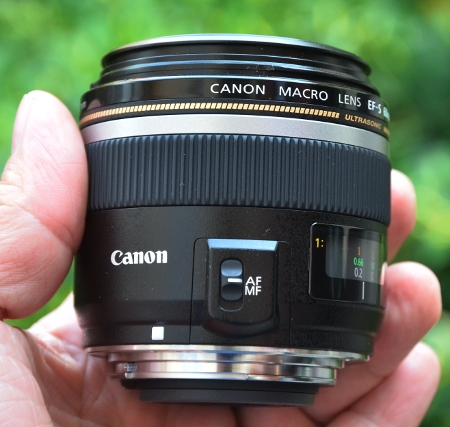
There are only one switch on the lens: the manual focus switch.
Canon 60mm optical quality
The is an awesome lens, don’t be fooled by the lack of “L” designation this lens mops the floor with most of the “L” lenses. The “L” lenses has a little better build quality and much higher price. This lens captures every bit of detail of the image, even if you not see.
Sweet spot
The lens is sharp everywhere, except smallest apertures due to diffraction. The theoretical sweet spot is at f/4.
Bokeh
The bokeh is awesome.
Price/performance ratio
This lens is well worth the money they want for it, if you know what to do with it. Not super cheap, but has a very good quality.
Compare to / alternatives / rivals
How is it compare to other lenses ?
you can check the alternatives / rivals in detail in below table.
| Lens name | ultrasonic autofocus | Magnification | Minimal focus distance | Filter | Size | Weight | Price US |
Canon 50mm f/2.5 Macro |
No | 1:2 | 23 cm (9.06″) | 52 mm | 68×63.5 mm | 280g (9.88 oz) | 300 USD |
Canon 60mm f/2.8 Macro |
yes | 1:1 | 20 cm | 52 mm | 73×70 mm | 335g (11.82 oz) | 470 USD |
Canon MP-E 65mm f/2.8 Macro |
No, only manual | 1:1-5:1 | 23.88 cm (9.4″) | 58 mm | 81×98 mm | 710g (25 oz) | 1049 USD |
Canon 100mm f/2.8 Macro |
yes | 1:1 | 30.48cm (1″) | 67 mm | 78.7×119.4 mm | 580g (20.46 oz) | 600 USD |
Canon 100mm f/2.8 is Macro |
yes | 1:1 | 30.48 cm (1″) | 67 mm | 77.7×122.9 mm | 625g (22.05 oz) | 950 USD |
Canon 180mm f/3.5 Macro |
yes | 1:1 | 48 cm (1.6′) | 72 mm | 82.5×186.6 mm | 1090 g (38.45 oz) | 1500 USD |
Tamron 60mm f/2 Di II Macro (only Aps-C) |
no | 1:1 | 23cm (9.06 “) | 55 mm | 73×80 mm | 380g (13.4 oz) | 524 USD |
Tamron 90mm f/2.8 Macro |
no | 1:1 | 28.96 cm (11.4″) | 55 mm | 71.1×96.5 mm | 405 g (14.29 oz) | 500 USD |
Tamron 90mm f/2.8 Di VC USD Macro |
yes | 1:1 | 30cm (11.8″) | 58 mm | 76.4×114.5 mm | 550g (19.4 oz) | 750 USD |
Tamron 180mm f/3.5 Macro |
no | 1:1 | 47cm (1.54′) | 72 mm | 83.8 x 165.1 mm | 920g (32.45 oz) | 740 USD |
Sigma 50mm f/2.8 Macro |
no | 1:1 | 18.8 cm (7.4″) | 55 mm | 71.1×63.5 | 312g (11 oz) | 349 USD |
Sigma EX DG 70mm f/2.8 Macro |
no | 1:1 | 25.65 cm (10.1″) | 62 mm | 76.2×94 mm | 525g (18.5 oz) | 449 USD |
Sigma 105mm f/2.8 EX DG OS HSM Macro |
yes | 1:1 | 31 cm (12.2″) | 62 mm | 78.7×127 mm | 726g (25.6 oz) | 670 USD |
Sigma 150mm f/2.8 EX DG OS HSM Macro |
yes | 1:1 | 38.1 cm (1.25′) | 72 mm | 78.7 x 150 mm | 1180 g (41.62 oz) | 1100 USD |
Sigma 180mm f/2.8 APO Macro EX DG OS |
yes | 1:1 | 47cm (18.7″) | 86 mm | 95×203.9mm | 1.63 kg (3.6 lb.) | 1700 USD |
Tokina 100mm f/2.8 AT-X M100 AF PRO D Macro |
No | 1:1 | 29.97 cm (11.8″) | 55 mm | 7.37*9.5 cm (2.9 x 3.74″) | 540g (19.05 oz) | 359 USD |
To simplify the table, there are lenses with ultrasonic focus, and micromotor driven autofocus lenses. The ultrasonic focus is quieter, more precise, quicker and a big, significant difference in usage (much more enjoyable). But in macro range the difference is almost nothing, as mostly manual focusing is the usual method, as most lenses are not really usable in macro range regarding af function.
Most people use macro lenses not just for macro, but for portraits or compressed landscapes as well. Here the ultrasonic af and the stabilizer is a big plus. If you have other lenses, and you mainly intend to use the lens for macro, the ultrasonic af and the stabilizer is not a huge bonus, but the manufacturers want to sell the lenses on higher price, means the newer higher specified lenses are usually better optically as well (meaning the non ultrasonic non is lenses are not the same optically), so no cheap best route exist. The difference is very small at some cases.
In price wise the 60mm is a cheaper offering, the longer lenses are more expensive usually. The cheaper 50mm f/2.8, Tamron 90mm and the Sigma 70mm has micromotor af. It is good to know that the ultrasonic focusing systems in different lenses are not the same. Some of them much speedier, others are lot slower. Some noise is usually expectable. The ultrasonic autofocus of the Canon 60mm macro is not so speedy like the autofocusing system of some other Canon telephoto lenses, but seems usable in the macro range as well, which is not very common. (For example the older Canon 100mm Macro is not as good autofocusing in the macro range).
The stabilizer, which some lenses has not a real gain in the macro range, only useful for non-moving, or slowly moving subjects in bigger distances. For portraits inside the room if the subject is not moving although is beneficial.
The longer lenses is more enjoyable to use if we make lots of macro shots. If the main aim is insect photography, perhaps the 150, 180mm lenses are the most recommended.
There are lots of other macro lenses available in the market, and none of them are bad actually. Let’s see: Canon 50mm f/2.5 compact macro with less magnification (1:2 ), Canon 100mm f/2.8 Macro, Canon 100mm f/2.8 Macro is L, Canon 180mm f/3.5 L macro, Sigma 50,70,105,150,180mm Macro lenses, Tamron 90mm f/2.8 original and the new Tamron USD VC version, Tamron 180mm f/3.5. The alternatives are many. The longer ones gives better working distance which is perhaps preferred if the main goal is macro photos of insects and other moving critters. I can make pictures of insects even with the 60mm without any big struggle, but some skill is needed for this, like patience, some understanding of your subject behavior, etc. I must admit if the subject is on the ground the longer lenses are better, because you don’t need to bend down so much with them.
To compare up to now I checked the Canon 100mm macro (older non is), the Tamron 90mm macro (older), the Tamron 180mm f/3.5 macro, the Nikon 100mm f/2.8 vr macro, the older Nikon 100mm macro. To compare the 60mm f/2.8 macro is a very desirable lens compare to any of these. The 180mm macro is blur the background significantly more for non macro shots, which is very interesting. The 60mm is wider, which is usually better for general photography, like portraits, street or landscape photography. On longer lenses you can use teleconverters to get 40% extra reach (1.4x is the max I can imagine), but extention tubes gives bigger magnification on shorter focal length lenses, which is preferable, because here we don’t introduce more optical elements.
The longer lenses are usually lot bigger in size and weight than the 60mm. I prefer the smaller size.
Even with that this lens is very attractive, and hold its own very well, because it is small, the depth of field is better at 60mm, than longer distances, has USM focus, and excellent sharpness. The one drawback that it is not Full frame compatible, like all the other alternatives, so is life hardly always ideal.
Pros
-Decent build quality
-Sensational picture quality
-f/2.8 brightness
-Compact size
-Little weight
-USM focus usable even in macro distances
Cons
-Only for crop sensor, not compatible with Full frame cameras
-Narrow field of view, not very good for landscapes or group photos
-Expensive for many people (for most as a third or fourth lens), but it is relative, in Europe everything is app. 50% more expensive than in the US.
-Some light falloff at f/2.8
Tips and tricks
My tip for this lens to get an extention tube to have even more magnification, means needs to go closer as well. I would buy a cheap non af ring, as it is empty anyway why to pay 6x times more for af and exif data ?
Summary
The Canon 60mm is an excellent lens, even compare to such very high quality lenses as the Nikon 105mm vr lens for example. So good I perhaps purchase one for myself in the future. If you need this and has the budget for it, it is highly recommended !
You can also share your opinion or review about the lens in comments.
Thanks for reading !
Other reviews for Canon mount
Other reviews for Canon mount
Canon 200mm f/2.8 review
Tamron 17-50mm f/2.8 review
Soligor 100-400 review
